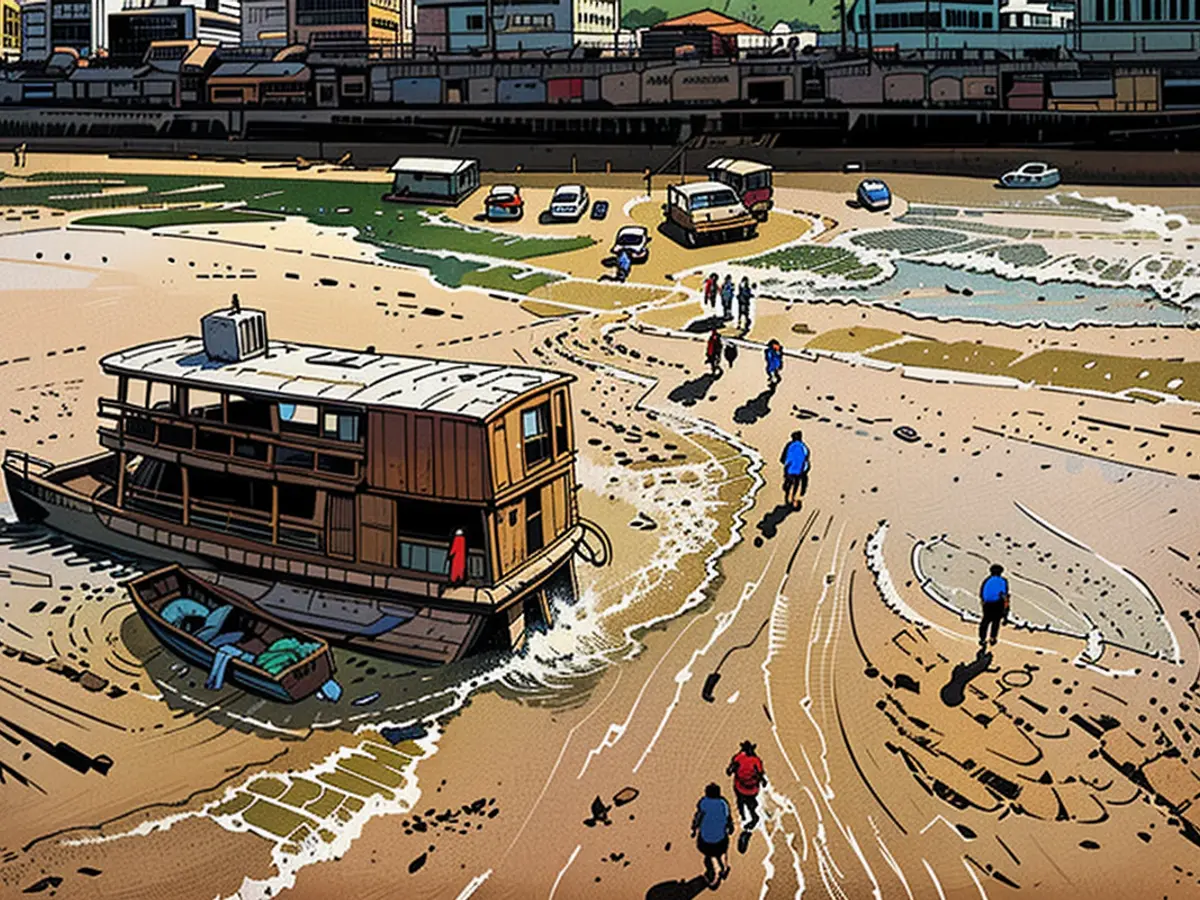The Amazon River experiences its lowest water level since 1902's records.
The Rio Negro, despite being a minor stream compared to the Amazon, is still a substantial waterway on its own. However, due to an ongoing dry spell, its water level has significantly decreased – hitting an all-time low. The second-largest tributary of the Amazon in Brazil has seen its water level plummet to its lowest point in 122 years, as per data collected by the Brazilian Geological Survey (SGB). In the provincial capital of Manaus, Brazils Amazonas state, the Rio Negro dropped to a record low of 12.66 meters, as per SGB reports.
Images from the port of Manaus show parts of the river completely dry due to the severe drought. According to SGB predictions, the problem may worsen in the upcoming days.
Livelihoods at Risk
Residents living along the riverbank are being adversely affected. Many rely on boats for transportation, but the shallow water levels have left several vessels stranded, making it hard to transport essentials like water, food, and medicine to the communities. "If my boat is stuck here, I lose my income," boat captain Raimundo Filho told news portal "G1".
More than a third of Brazil, mainly the Amazon region, is experiencing an extreme drought, according to the National Center for Natural Disaster Monitoring (CEMADEN). This is the worst drought the region has seen since systematic data collection began in 1950 and is linked to weather phenomena like El Niño and climate change.
As per the national coordinator of the hydrological warning system of SGB, Artur Matos, the Amazon region has experienced a series of extreme climate events in recent years. "The years 2021 and 2022 were marked by severe floods, and the years 2023 and 2024 by intense droughts," he said. "This indicates that such events are becoming increasingly frequent."
The current extreme drought affecting more than a third of Brazil, predominantly the Amazon region, is linked to weather phenomena such as El Niño and climate change. The ongoing dry spell has significantly impacted the El Niño-affected Rio Negro, causing its water level to hit an all-time low in over a century.







